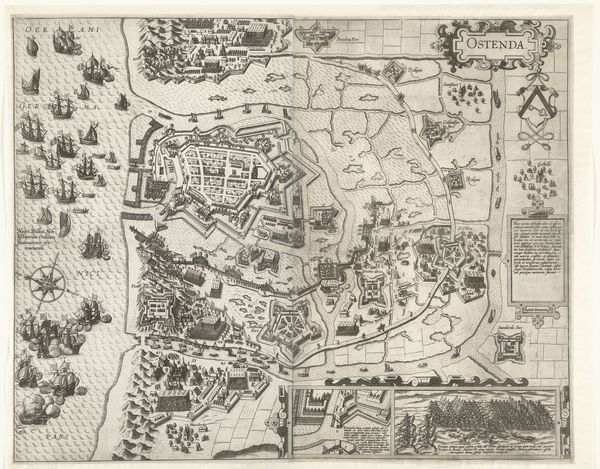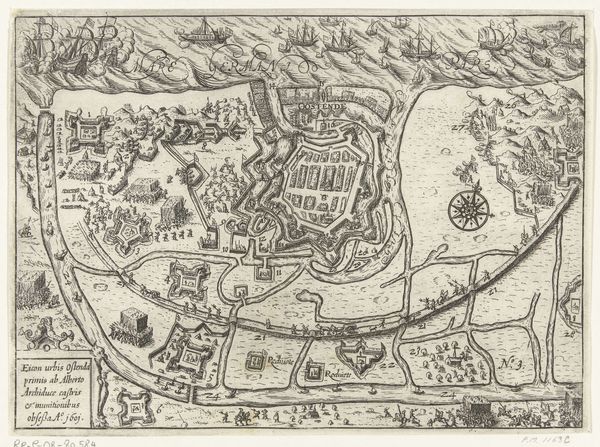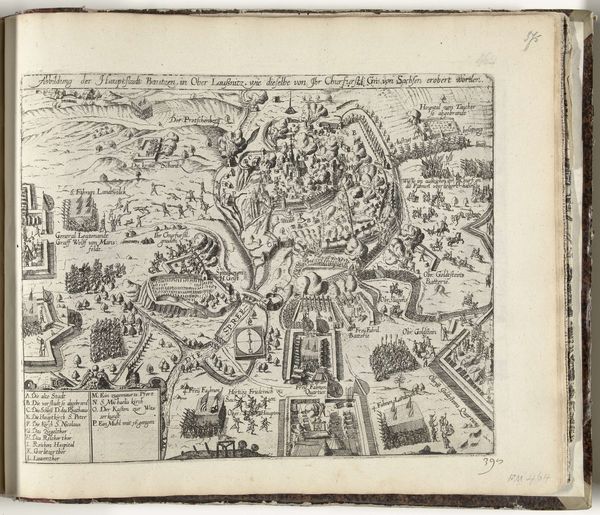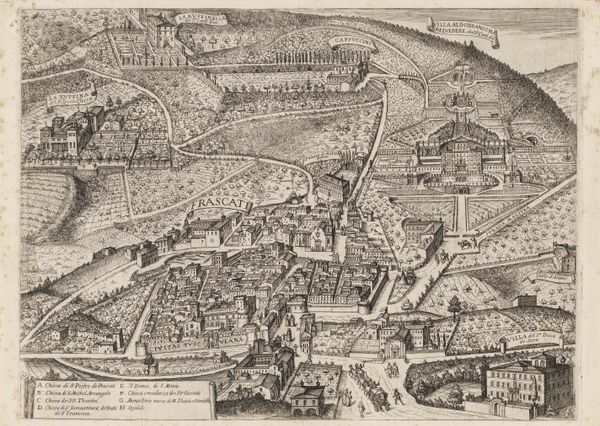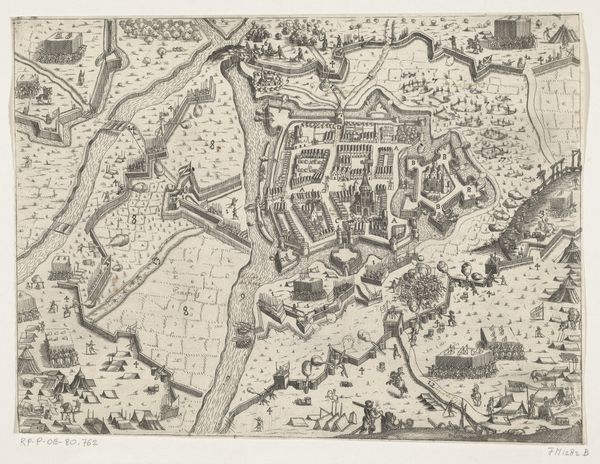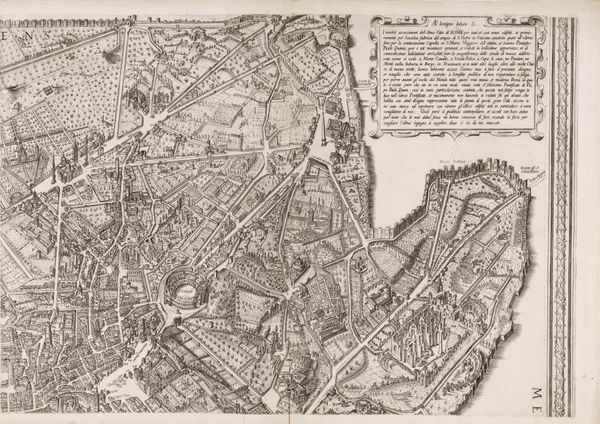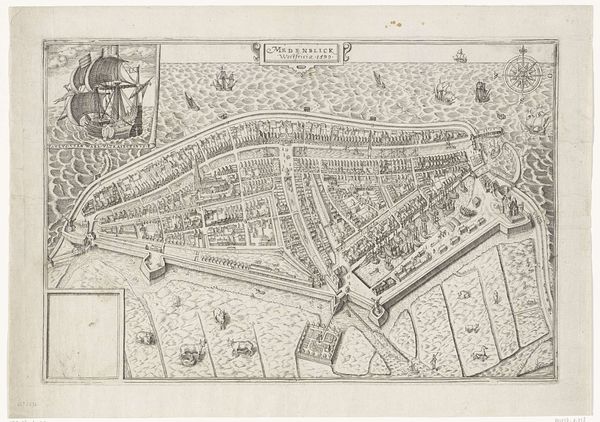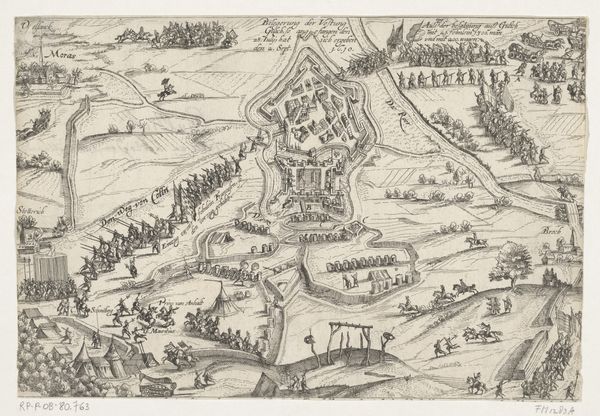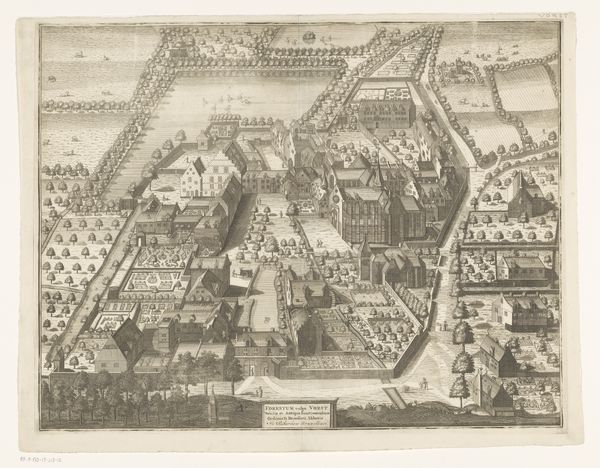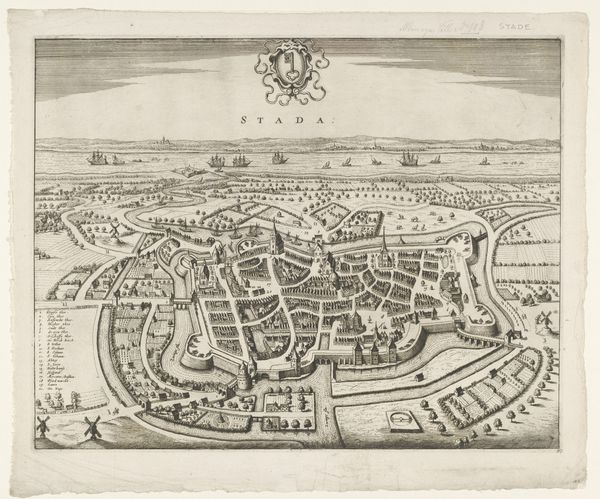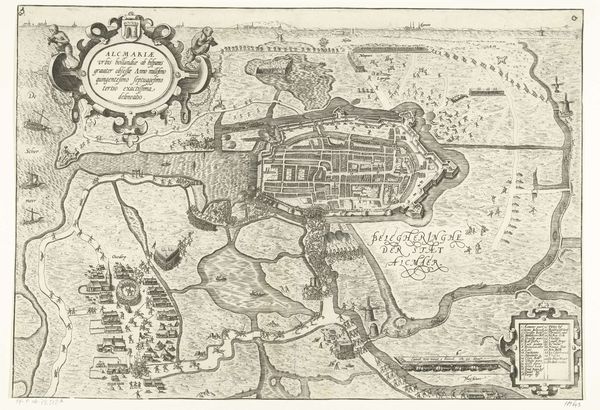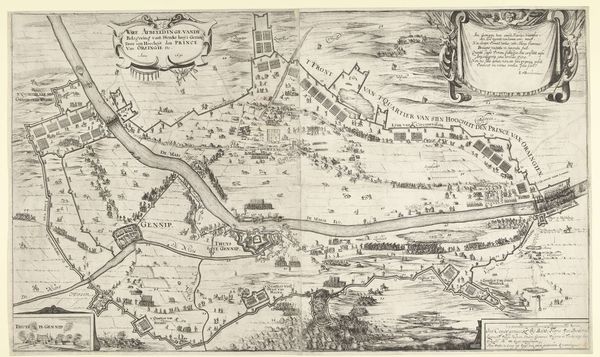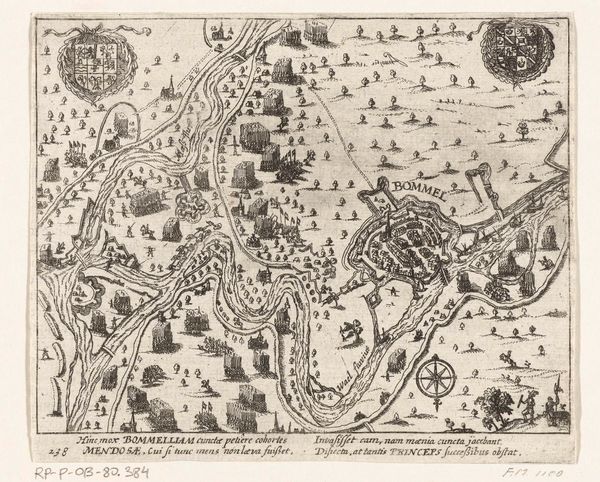
Plattegrond van Amsterdam (blad rechtsboven), 1625 1625
0:00
0:00
balthasarfloriszvanberckenrode
Rijksmuseum
print, etching, engraving
#
dutch-golden-age
# print
#
pen illustration
#
etching
#
geometric
#
cityscape
#
engraving
Dimensions: height 458 mm, width 532 mm
Copyright: Rijks Museum: Open Domain
Editor: This etching from 1625, "Plattegrond van Amsterdam (blad rechtsboven)," by Balthasar Florisz. van Berckenrode, seems to present two views of the city—almost like it's showing two different Amsterdams! What historical narratives do you see unfolding within this artwork? Curator: What strikes me immediately is the act of mapping itself. Mapping has historically been an instrument of power, a way to claim space and control narratives. This isn't simply a neutral depiction; it reflects a very specific perspective and agenda of Amsterdam in 1625, as well as its role in global trade. Do you notice anything in the visual construction that points towards a nascent merchant class? Editor: Well, there is the obvious commercial aspect in this detailed street view of Amsterdam. The key listing streets seems useful for navigation but could have also served as an index for the city’s economic centers. It is easy to see Amsterdam's role in the age of exploration. Curator: Exactly! The visual precision given to the streets where merchants lived reflects and reinforces its increasing social and economic dominance. The image itself became a commodity and contributed to shaping the city’s and its residents’ identity. Now, what stories are left out, I wonder? Which residents or which realities find no place within this orderly display? Editor: I see what you mean! While beautifully rendered, this image, in its deliberate arrangement, tells only a partial story. It lacks the full complexities of life within Amsterdam’s streets at that time. Curator: Precisely. Consider how that cartouche celebrates the city. The map then becomes not just a tool for navigation but a political statement. It serves the interests of a powerful, emerging elite. This "Plattegrond" serves as a powerful visual record of a city on the rise, ripe with the complexities of power and identity. Editor: It's fascinating to see how even a seemingly objective city plan like this can be laden with social and political meaning!
Comments
No comments
Be the first to comment and join the conversation on the ultimate creative platform.
